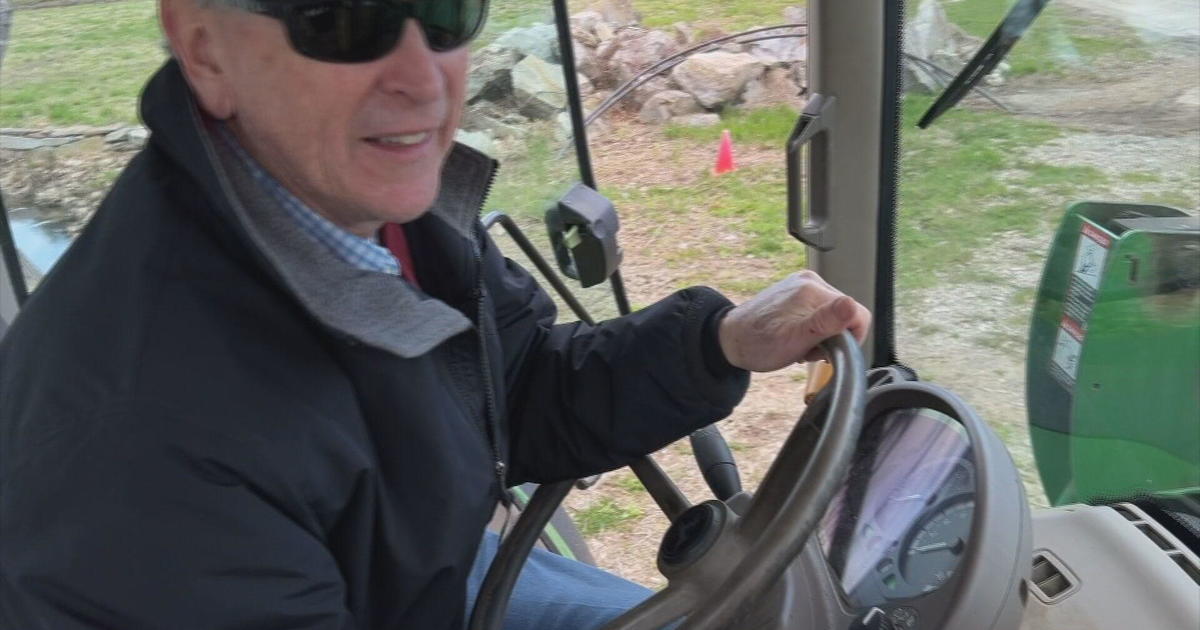NASA UAP report finds no evidence of "extraterrestrial" UFOs, but some encounters still defy explanation
Washington — An independent group of scientist and experts convened by NASA found no evidence that unidentified anomalous phenomena, known as UAPs or UFOs, are "extraterrestrial" in nature, but stressed that better data is needed to understand some encounters that have defied explanation.
NASA formed the group of 16 experts last year to examine how the space agency can better contribute to the scientific understanding of the objects, which have been reported by hundreds of military and commercial pilots.
On Thursday evening NASA announced that they were appointing Mark McInerney as its director of UAP research in an updated news statement. McInerney will "centralize communications, resources, and data analytical capabilities to establish a robust database for the evaluation of future UAP."
Formally known as the Unidentified Anomalous Phenomena Independent Study, the group issued its final 36-page report on Thursday, with several recommendations about how the space agency can use its scientific expertise to contribute to the government's investigations into the objects.
"The top takeaway from the study is that there is a lot more to learn," NASA Administrator Bill Nelson said at a briefing about the findings. "The NASA independent study team did not find any evidence that UAP have an extraterrestrial origin. But we don't know what these UAP are."
What does the NASA UAP report say?
The report does not contain any bombshell claims akin to congressional testimony that made headlines over the summer, when a former intelligence officer alleged a decades-long government program to retrieve and reverse engineer UAP craft, which the Defense Department denied.
Instead, the NASA group focused on examining how the space agency can "contribute to a comprehensive, government-wide approach to collecting future data" about UAP incidents, as the report put it. A relatively new office within the Defense Department known as the All-Domain Anomaly Resolution Office has taken the lead in collecting and examining UAP reports from military pilots, which totaled about 800 as of May.
The NASA report, which relied on unclassified information, noted that a small subset of UAP encounters "cannot be immediately identified as known human-made or natural phenomena." Understanding these incidents "will require new and robust data acquisition methods, advanced analysis techniques, a systematic reporting framework and reducing reporting stigma," the report said.
But the group said there is a high bar for claiming that the objects have an otherworldly origin.
"[I]n the search for life beyond Earth, extraterrestrial life itself must be the hypothesis of last resort — the answer we turn to only after ruling out all other possibilities. As Sherlock Holmes said, 'Once you eliminate the impossible, whatever remains, no matter how improbable, must be the truth,'" the report said. "To date, in the peer-reviewed scientific literature, there is no conclusive evidence suggesting an extraterrestrial origin for UAP. When it comes to UAP, the challenge we have is that the data needed to explain these anomalous sightings often do not exist."
The report said NASA and the private sector can help fill some of the gaps in data that exist. While NASA's satellites pointed at Earth can't detect objects as small as UAPs, they do have the capability to "probe the state of the local earth, oceanic, and atmospheric conditions" that might help to explain some incidents that are detected by other sensors.
"NASA's assets can play a vital role by directly determining whether specific environmental factors are associated with certain reported UAP behaviors or occurrences," the report said.
The group said the commercial satellite industry does have the capability to take higher-resolution images: "Although every point on Earth does not have constant high-resolution coverage, the panel finds nonetheless that such commercial constellations could offer a powerful complement to the detection and study of UAP when coincident collection occurs."
Current data collection, Thursday's report noted, "is hampered by poor sensor calibration, the lack of multiple measurements, the lack of sensor metadata, and the lack of baseline data." The space agency's expertise "should be comprehensively leveraged as part of a robust and systematic data acquisition strategy within the whole-of-government framework."
Members held their first and only public meeting about their work in May and stressed the need for better data about UAPs across the board, including clearer photos and videos of the incidents. In Thursday's report, the study group proposed collecting crowdsourced data about encounters from the public, including through the use of "open-source smartphone-based apps that simultaneously gather imaging data and other smartphone sensor metadata from multiple citizen observers worldwide."



